Match the structures of compounds given in Column I with the classes of compounds given Column II
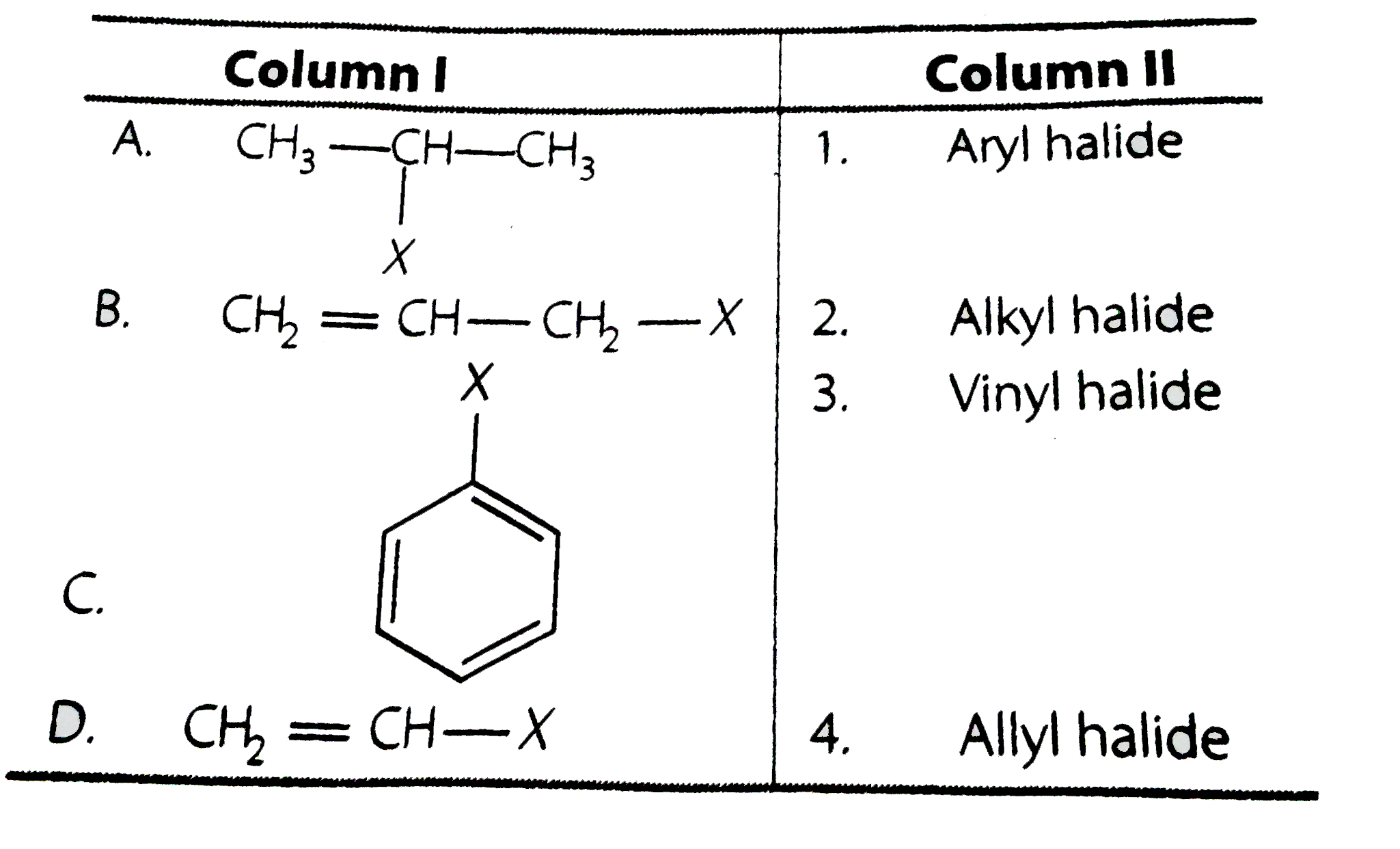
A→(2) B→(4) C→(1) D→(3)
A. In alkyl halide, halogen atom is bonded to sp3 hybridised carbon atom, which may be further bonded to one, two or three alkyl group, i.e., CH3−CH(X)−CH3
B. Allyl halides are the compounds in which the halogen atom is bonded to sp3 hybridised carbon atom next to carbon-carbon double bond. i.e, CH2− =CH- CH2 - X
C. Aryl halides are the compounds in which the halogen atom is bonded to sp2 hybridised carbon atom of an aromatic ring, i.e., C6H5X
D. Vinyl halides are the compounds in which the halogen atom is bonded to an sp2 hybridised carbon atom of a carbon-carbon double bond, i.e., CH2=CH−X
Topper's Solved these Questions
- HALOALKANES AND HALOARENESBOOK - NCERT EXEMPLAR ENGLISHCHAPTER - HALOALKANES AND HALOARENESEXERCISE - Assertion & Reason
10 Videos
- HALOALKANES AND HALOARENESBOOK - NCERT EXEMPLAR ENGLISHCHAPTER - HALOALKANES AND HALOARENESEXERCISE - Long Answer Type Questions
3 Videos
- HALOALKANES AND HALOARENESBOOK - NCERT EXEMPLAR ENGLISHCHAPTER - HALOALKANES AND HALOARENESEXERCISE - Short Answer Type Questions
35 Videos
- GENERAL PRINCIPLE AND PROCESSES OF ISOLATION OF ELEMENTS BOOK - NCERT EXEMPLAR ENGLISHCHAPTER - GENERAL PRINCIPLE AND PROCESSES OF ISOLATION OF ELEMENTS EXERCISE - Long Answer Type Questions
1 Videos
- P-BLOCK ELEMENTSBOOK - NCERT EXEMPLAR ENGLISHCHAPTER - P-BLOCK ELEMENTSEXERCISE - Long Answer Type Questions
3 Videos
Similar Questions
Match the structures of compounds given in Column I with the classes of compounds given in Column II.
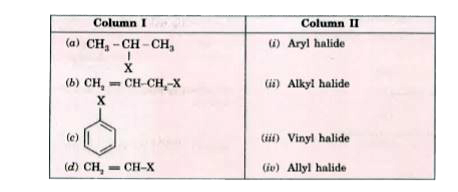
View SolutionMatch the structures of compounds given in Column I with the classes of compounds given in Column II.

View SolutionMatch the structures of compounds given in column I with the classes of compounds given in column II.
 .
.
View SolutionMatch the structureso of the compounds given in Column I with the name of compounds given in Column II.

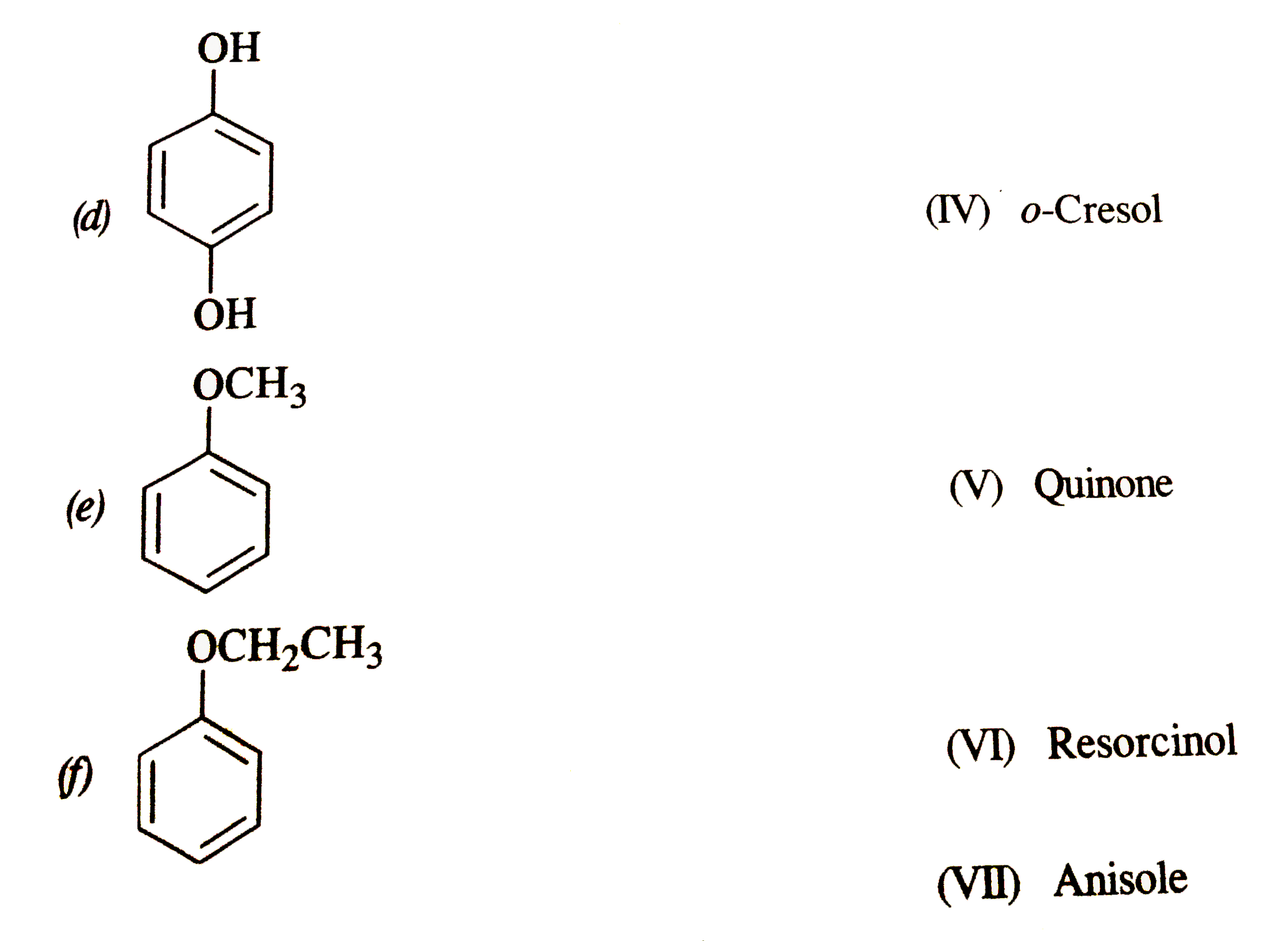
View SolutionMatch the structures of the compounds given in Column I with the name of the compounds given in Column II.

View SolutionMatch the structures of the compounds given in Column I with the name of the compounds given in Column II.

View SolutionMatch the structures of compounds given in column A with their IUPAC names in column B.
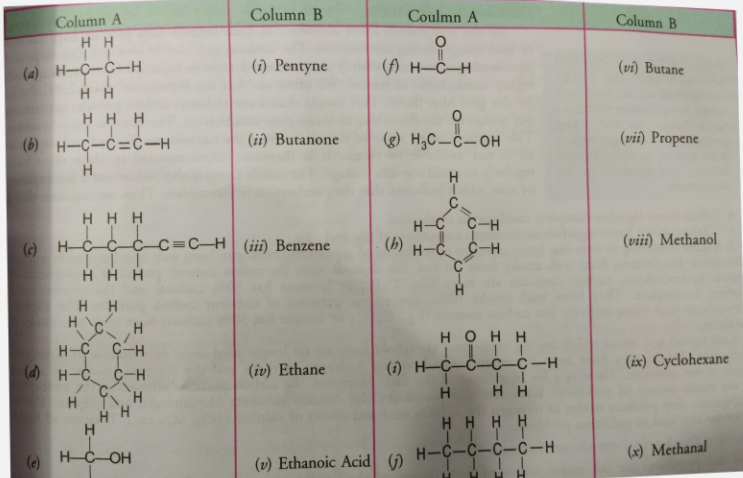
View SolutionMatch the class of compounds given in Column I with their functions given in Column II.
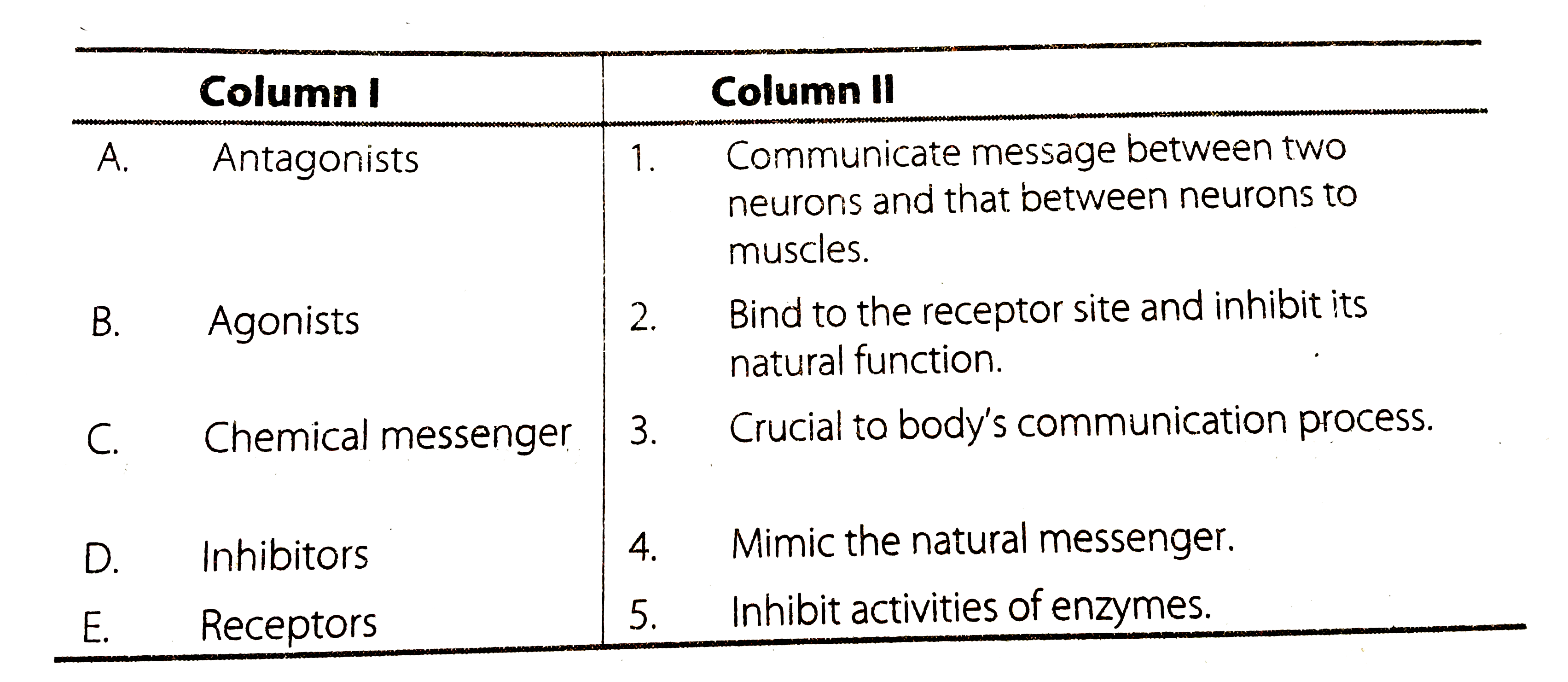
View SolutionMatch the class of compounds given in Column I with their fucntions given in Column II .

View SolutionMatch the class of compounds given in Column I with their functions given in Column II.

View Solution
